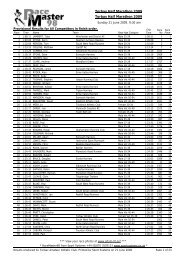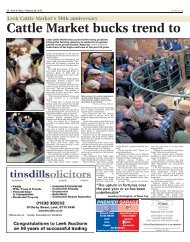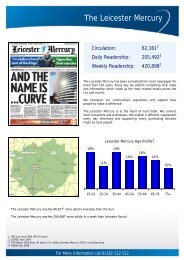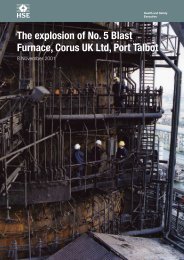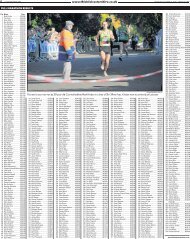A cArbon cApture And storAge network for yorkshire And humber
A cArbon cApture And storAge network for yorkshire And humber
A cArbon cApture And storAge network for yorkshire And humber
You also want an ePaper? Increase the reach of your titles
YUMPU automatically turns print PDFs into web optimized ePapers that Google loves.
Table 7.3 Summary of core routes<br />
Route Total distance km Note<br />
Easington VI 191 Includes Indefatigable<br />
HL 210 Pre 2030 only<br />
Theddlethorpe VI 195 Includes Indefatigable<br />
HL 190 Pre 2030 only<br />
Dimlington Ravenspurn 70<br />
7.9 SUMMARY OF CORE ROUTES<br />
On the basis of simplicity the HL option is<br />
best, particularly if high flow rates occur<br />
quickly and high well and field development<br />
costs mitigate against smaller storage sites.<br />
For uncertain timings of CO2 flows and a<br />
reasonable build up of flow the VI option<br />
appears best. It is possible to see that both<br />
routes would be developed if there is distinct<br />
phasing of the onshore system.<br />
The following lengths include allowances <strong>for</strong><br />
infield pipelines.<br />
The modelling of the filling schemes was<br />
done <strong>for</strong> both the HL and VI routes. Of<br />
particular note was the constraint of<br />
injectivity, meaning that all fields are found<br />
to be in use <strong>for</strong> at least 10 years with more<br />
than one field storing CO2 at all times<br />
after the start, thus mitigating the risk of a<br />
problem with a single field. It may be better<br />
<strong>for</strong> some fields to be further investigated<br />
to see what actual injectivity can be<br />
achieved as in general the timing of pipeline<br />
investment is driven by injection rates, not<br />
the storage capacity of the stores.<br />
Carbon Capture and Storage Network 29<br />
7.10 OFFSHORE ROUTE CHOICE<br />
The onshore design has led to a<br />
preference <strong>for</strong> a route from Theddlethorp.<br />
The choice between the VI and HL routes<br />
was determined by the relative costs,<br />
with VI not requiring early extension to<br />
Indefatigable if the adjacent aquifer is proven<br />
the HL being on average more costly. The<br />
major uncertainty, which affects both, is the<br />
potential use of saline aquifers. If no aquifer<br />
on the VI route is proven then VI would<br />
also be extended to Leman to provide<br />
secure storage. Conversely if the HL route<br />
was chosen the line extensions would be<br />
northwards to Indefatigable, Viking (including<br />
the aquifer), and Barque in order to meet<br />
possible scenarios.<br />
7.11 DECOMMISSIONING OF<br />
OFFSHORE pIpELINES<br />
The lives of the assets included in this<br />
study extend beyond 2050. We assume<br />
that decommissioning would be as is<br />
done <strong>for</strong> existing large diameter pipelines,<br />
which is that they are filled with inhibited<br />
seawater and left in-situ as the best current<br />
practice solution.



